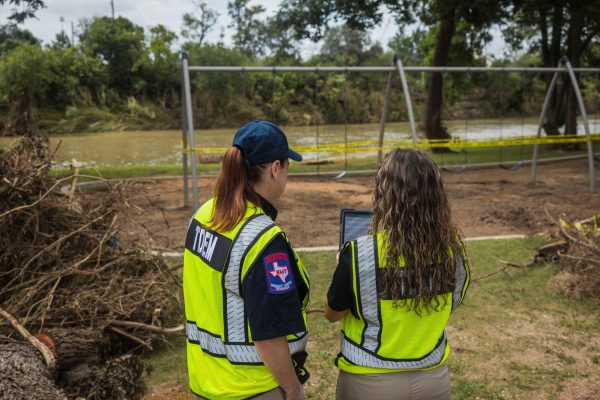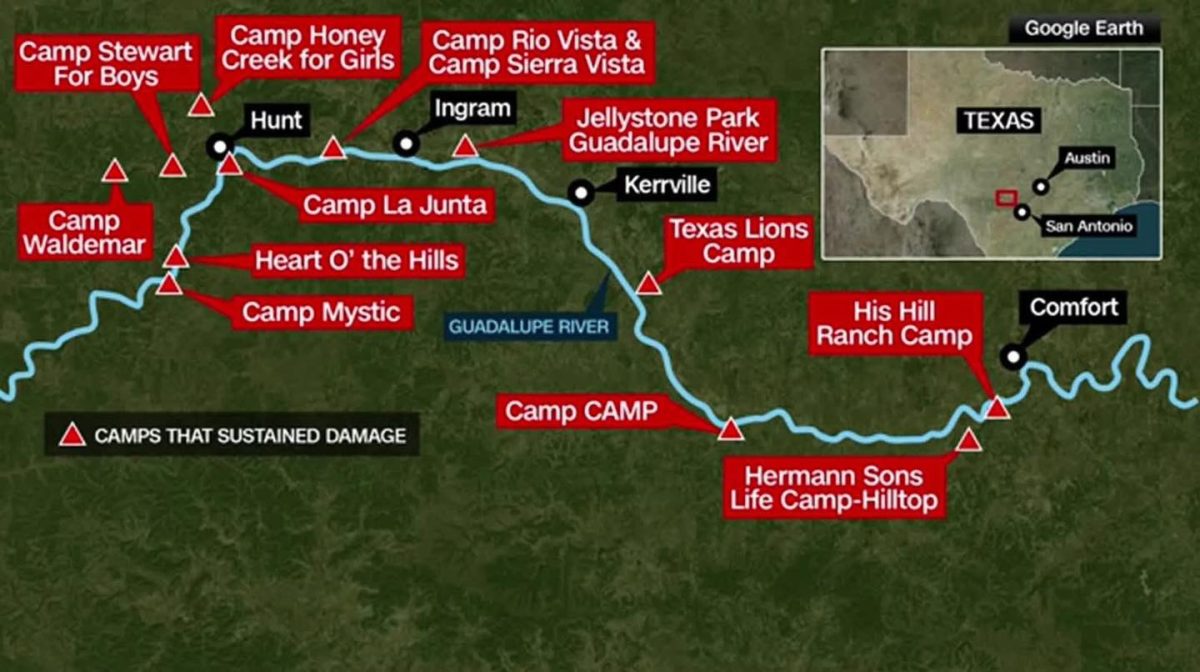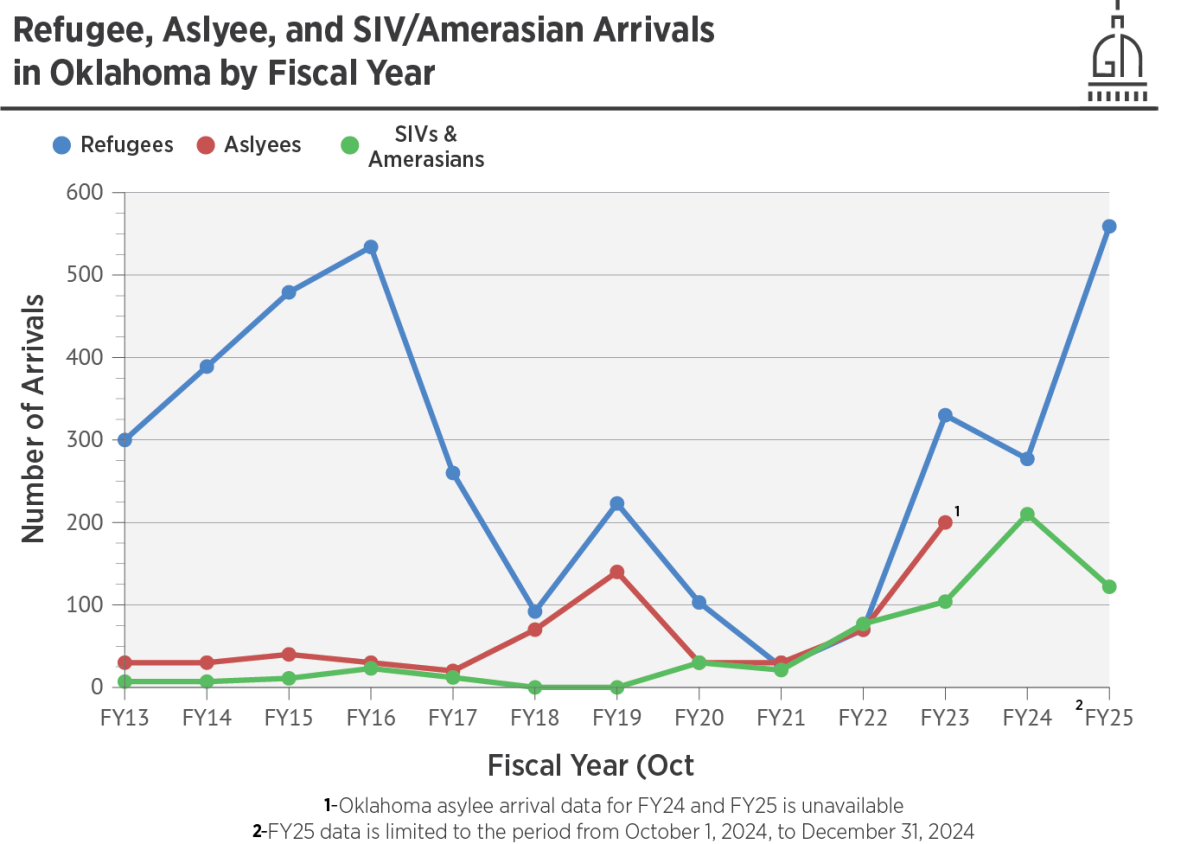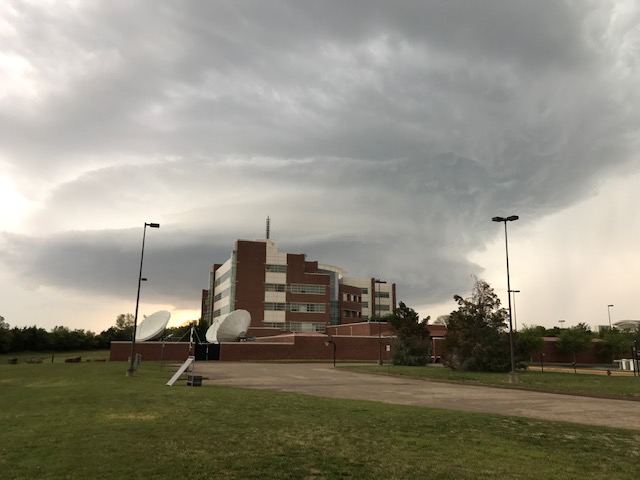WASHINGTON – The homeland security secretary on Wednesday called the nation’s emergency response agency a “bloated bureaucracy” as deadly floodwaters surged through the Texas hill country.
Even as FEMA, hit by huge layoffs when President Trump took office, struggled to deploy resources to flood-stricken Kerr County where the death toll now stands at more than 120 children and adults, Kristi Noem, secretary of the Department of Homeland Security said Wednesday: “The entire agency needs to be eliminated as it exists today.”
Her comments came while residents along the Guadalupe River faced submerged homes and washed-out roads- the FEMA Review Council gathered for its second meeting with the intent on reshaping the very agency charged with responding to such disasters.
“What is happening in Texas today is exactly why this FEMA Review Council matters,” said Louisiana Gov. Jeff Landry, as the council convened Wednesday in New Orleans.
“This is not political theater,” Landry continued. “The president has tasked … this council with addressing emergency response, because, like me, he believes that disaster response must be fast, it must be smart, and it must be closer to the ground.”
Floodwaters rise faster than bureaucracy moves. In the heart of Texas, more than 120 are dead, over 170 still missing, and the warnings came too late or not at all. Water rose more than 25 feet in less than two hours, sweeping away homes, campers, and lives before many could react. The flood’s swift fury exposed a devastating failure in early warnings and emergency readiness.
The Texas Department of Emergency Management is being harshly criticized for its failures in the flooding- officials missed multiple chances to fund a critical flood warning system in the region long known as “flash-flood alley.” When this month’s storm hit, there was no alert system in place- just rising water.

Noem said some of FEMA’s response to Texas is “exactly” how President Trump imagined that this agency would operate, “immediately making decisions, getting them resources and dollars that they need so that they can conduct the response that they need to do on the ground.”
She added that the rapid delivery of funds to Texas resembled the “state block grants” model Trump has promoted. The idea would replace FEMA’s current system of reimbursing states for response and recovery expenses at a cost-share of at least 75%. The National Flood Insurance Program, which FEMA also oversees, may also be significantly reformed as a result of the agency’s overhaul.
The president approved Texas Gov. Greg Abbott’s request for a major disaster declaration just one day after it was submitted, activating FEMA resources and unlocking assistance for survivors and local governments.
Abbott on Wednesday called a special session of the Texas Legislature with an agenda that includes consideration of flood warning systems for the Guadalupe basin and other flood-prone areas..
On Sunday, Trump demurred on answering about the fate of FEMA as Texas officials scrambled to respond to the Guadalupe River disaster.
“Well FEMA is something we can talk about later,” Trump said. “But right now, they’re busy working, so we’ll leave it at that.”
But political pressure is already rising in states such as Oklahoma that have been hard hit in the past by tornadoes and fires in states like California and New Mexico. The administration is proposing to shift more responsibility to the states for managing disasters.
The omission isn’t lost on lawmakers. U.S. Rep. Tom Cole, chair of the House Appropriations Committee who lives in Moore- a city forever changed by a 2013 tornado – has urged caution. In May, he reminded Noem that the committee looks forward to receiving a plan from the administration about how the grants will be reinstated. Now, looking more promising in process, looks less promising in funding.
“When state and local resources are exhausted,” Cole said, “we do rely on FEMA to bring additional capabilities that save residents, remove debris, and help our fellow citizens rebuild.”
Gaylord News is a reporting project of the University of Oklahoma Gaylord College Journalism and Mass Communication. For more stories by Gaylord News go to GaylordNews.net.








